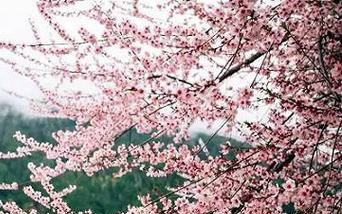
关于国旗的由来演讲稿
五星红旗的由来 亲爱的老师们,同学们: 大家好
今天我演讲的题目是:五星红旗的由来 新中国成立前夕,1949年6月16日,全国政协筹备会议首次会议上,决定成立拟定国旗、国徽、国歌方案小组,并向全国发出征稿启事。
一个月内就收到国内外应征稿件1920件,图案1992幅。
应征的国旗方案也各具特色,如陈嘉庚设计的国旗是镰刀斧头旗;郭沫若设计的国旗是两个长条,象征中华民族的发祥地长江和黄河;朱德设计的国旗左上角为蓝色长方形,嵌有红五角星,象征晴朗的天空。
这些图案经过认真挑选,选出38幅图案印发给政协代表,让大家评议。
最后确定其中的复字第32号图案,经审查通过并在9月27日的全国政协第一届全体会议上正式通过作为中华人民共和国国旗。
这面国旗的设计者曾联松,是上海一名普通的经济工作者。
国旗的寓意是:国旗旗面为红色象征革命; 五角星用黄色是为着在红地上显出光明,同时也表示中华民族为黄色人种,四颗小五角星各有一角正对着大星的中心点,表示围绕着一个中心而团结。
一颗大星引导在前,几颗小星环绕其后,形成众星拱北斗之势,大星即为中国共产党,小星代表中国人民,党和人民团结战斗,从胜利走向胜利。
在确定小星的数目时,他联想到毛主席在《论人民民主专政》一文中说:“人民包括四个阶级,即工人阶级、农民阶级、小资产阶级和民族资产阶级。
”所以他决定以四颗小星代表广大人民。
关于劳动节的演讲稿,要新颖点的。
不要有劳动节的来历
各位领导、各位同事: 大家晚上好 《劳动者》是指达到法定年龄,具有劳动能力,以从事某种社会劳动获得收入为主要生活来源,依据法律或合同的规定,在用人单位的管理下从事劳动并获取劳动报酬的自然人(中外自然人)。
在此五一劳动节即将来临之际,我们大家有幸聚在了一起,在这里我给大家演讲的题目是《劳动者最光荣》,我赞美劳动,劳动者是最光荣的
记得上小学时,老师教会了一首《劳动最光荣》的歌曲,最喜欢其中的那句“幸福的生活在哪里
要靠劳动来创造”。
那时候只把劳动简单的理解为“劳作”,局限于每周一次的劳动课。
多年以后,成长为了千万劳动者中的一员,才深深体会到生活的多味,劳动的艰辛。
劳动是汗水,是欢笑;是苦涩,是甜蜜;是给予,更是幸福。
有一分劳动,就有一份收获。
你给生活付出了多少耕耘,生活就会回报你多少果实,你就会拥有多少快乐与幸福,对于企业也是如此。
双手是用来劳动的,劳动帮我们创造幸福的生活。
有很多人们默默无闻的靠自己全部的力量去拼搏、去进取、去创造,虽然没有轰轰烈烈的壮举,没有声名显赫的地位,他们同样享受着劳动带来的快乐和幸福,甚至还要充实,因为幸福不仅仅只与物质有关
劳动者是光荣的,劳动着是幸福的
作为××的一员,我们更加能够深切的体会到这一点
5月1日是国际劳动节,这是全世界劳动人民自己的节日。
今天,我们站在鲜艳的五星红旗下,应该怎样纪念和庆祝这一伟大光辉的节日呢
我们——作为跨世纪的一代建设者和接班人,将责无旁贷地挑起建设社会主义现代化强国的重担,以主人翁的态度投入到建设祖国的伟大事业中去。
作为一名中学生,从小就应该树立主人翁的意识,关心国家大事,热爱自己的家园,树立远大的志向,把自己的前途同祖国的命运结合起来,使自己成为一个有理想有志气有抱负有高尚品质的人。
我们要培养劳动感情,养成劳动习惯,珍惜劳动成果,积极参加社会实践活动。
当然,最重要的还是要努力学习科学文化知识,扎实掌握一技之长,为将来把我国建设繁荣富强打下良好的基础
这才是对“五?一”国际劳动节最好的的纪念。
谢谢大家!
成长故事 演讲稿
看你提的问题,文笔不错啊,自己写呗
关于美食的演讲稿
中国历史悠久,其烹饪艺术渊远流长, 闻名于世。
中餐以它的色、香、味、形而诱 人。
长期以来由于各地区的自然环境、文 化、风俗、习惯不同,中国菜肴形成了不同风味的地方菜系。
作为当地风味,北京的烹 饪则集各地不同风味之大全。
北方菜系以山 东口味为主流,擅长烹制海味。
四川厨师烹 调爱放干、鲜辣椒,川菜以麻辣辛香调料而闻名。
粤菜取料广泛,他们讲究鲜嫩和酥 脆。
淮扬菜注重,特别是油而不 腻,清淡鲜美。
谭家菜咸甜适宜,常言 道:“南甜北咸,”谭家菜却两者兼顾。
中国人吃饭,吃的是概念。
或者用一种通俗的说法:吃的是文化。
这使饮食问题带 有了社会性(甚至艺术性),而不再仅仅是一项形而下的生理活动。
日本人饱食终日,也提炼为向哲学靠拢的茶道,有点在清风、 明月、插花与器皿中求真理的意思。
中国人 则更了不起,把一日三餐都当作兢兢业业的 功课了,煞费苦心,追求着那令人拍案称绝的艺术效果。
“好吃极了!”是较流行的一句赞 美用语。
所以,美食家的虔诚丝毫不亚于画 家或雕塑家,对美的体会甚至更全面:色、香、味———连深藏不露的舌头都调动起来 了,成为鉴赏的工具。
当一席大菜合盘托出,井然有序地布置 在餐桌中央,简直就像揭开了蒙在某一尊艺 术品上面的幕布,不时能听见一、两声由衷的喝采———当然,这是躲在后台掌勺的厨师 所期待的。
宾客们举杯相庆,仿佛在进行小 小的剪彩仪式。
然后就,频频挥动 蜻蜓点水的筷子。
评,脂砚斋评,也不过如此吧:在字里行 间作点小楷的眉批。
不管是冷盘还是炒菜, 最终都必须经得起筷子的“酷评”。
在中国,每一桌宴席的推出,都笼罩着 新船下水般的热烈气氛。
而每一位食客,都是动作熟练的老水手———或者说,都是潜在 的评委。
难怪开餐馆的老板,都很会看客人 的脸色。
看客人的脸色就能了解到厨师的水 平。
中国文化的最高境界,就是一个“喜”字。
这也是中国人最热爱的一个汉字。
而吃饭是 最能烘托出这种喜气的。
喜气洋洋,东道主 自然满意。
传统的喜宴,被清代的 发挥到极致。
从其名称即能感受到“民族大团结”的意味,“强强联合”的意味。
正宗的满汉 全席要连吃三天三夜,茶肴不重复。
这是具 有中国特色的狂欢节:一场饮食文化的马拉 松!吃饭,在中国是最日常的仪式,是最密集 的节日。
信奉基-督的西洋人就餐前习惯在胸前画十字,念叨一句“上帝保佑”,感谢上帝赐予的 面包与盐,大多数中国人都是无神论者,把 酒临风时反而充满了当家做主的感觉。
饱餐 一顿(若能持螯赋诗就更好了),是离他们最近 的一种自由。
由此可见,这个感匮乏,艺术气息却很浓郁。
在我想像中,美食 家都是一些拥有古老传统的民间艺术家。
西餐折射出私有制的影子,各自为政, 管理好自己的盘子———使用刀叉是为了便于 分割利益。
中餐则体现了最朴素的共-产主 义。
中国人围桌而聚,继承了原始 的遗传基因,有肉大家吃,有酒大家喝,人 人皆可分一杯羹。
大锅饭的传统很难打破。
好在中国的饭桌也是最有凝聚力的地方,有 福同享、有难共担的作风颇受欢 迎。
中国人通过聚餐就能产生四海之内皆兄 弟、的幻觉,这种虚拟的亲情毕竟 大大增进了其食欲。
所以中国人吃饭,也是在吃环境,吃气氛,甚至吃人际关系。
边说 边吃,边吃边听。
这是一种超越了吃的吃。
我一直认为中国人的吃是最有情调的,最有 人情味的。
中国人有四大菜系八大风味。
川菜、粤菜、湘菜、齐鲁菜、淮扬菜、东北菜乃至上 海本邦菜……仿佛实行军阀割据似的。
但在我 眼中,这更像在划分艺术流派。
出自圣人之 乡的齐鲁菜,称得上古典主义。
缠绵悱恻的淮扬菜,属于浪漫主义。
假如说辛辣的湘菜 是批判现实主义,麻辣的川菜则算魔幻现实 主义了———一粒花椒,有时比炮弹还厉害, 充分地调动起我们舌头的想像力。
当然,也可以用别的方法换算:上海菜属于杨柳岸晓 风残月的婉约派,东北菜则相当于大江东 去、浪淘尽千古风流人物的豪放派…… 不知西方社会,在政治家、思想家、艺 术家、军事家等等之外,是否还产生过美食家的头衔?在中国,美食家几乎是一种传统。
虽然它一直近似于“闲职”,却也是颇让人羡慕 的。
欧洲文明里,美食家一度缺席,正如它所推崇的探险家,对于中国而言,则是近代 以后舶来的词汇。
但我私下里以为:美食家 也算是一种足不出户的探险家———“父母 在,不远游”,中国人只好陶醉于另一种意义的探险,那就是对山珍海味的猎奇。
美食家 用菜谱来代替地图,用杯盏来代替罗盘,用 筷子来代替桨橹,航行在自己的味觉里,同 样也领略了无限风光。
这种冒险心理在河豚的问题上发挥到极致。
河豚相当于中国饮食 文化里的“禁果”———一种致命的诱-惑,它的 鲜美因为神秘与危险而被夸张了。
美食家们不仅没有望而却步,反而趋之若鹜。
这份勇 气,恐怕连渎职的亚当、夏娃都会自叹弗 如。
我想要“世博的由来”为题的一段英文3分钟演讲稿
世界博览会是由一个国家的政府主办,有多个国家或国际组织参加,以展现人类在社会、经济、文化和科技领域取得成就的国际性大型展示会。
其特点是举办时间长、展出规模大、参展国家多、影响深远。
自1851年英国伦敦举办第一届展览会以来,世博会因其发展迅速而享有“经济、科技、文化领域内的奥林匹克盛会”的美誉。
按照国际展览局的规定,世界博览会按性质、规模、展期分为两种:一种是注册类(以前称综合性)世博会,展期通常为6个月,从2000年开始每5年举办一次;另一类是认可类(以前称专业性)世博会,展期通常为3个月,在两届注册类世博会之间举办一次。
注册类世界博览会不同于一般的贸易促销和经济招商的展览会,是全球最高级别的博览会 PS:这个没英文版。
--------------------------------------------------------------------- World Expositions are galleries of human inspirations and thoughts. Since 1851 when the Great Exhibition of Industries of All Nations was held in London, the World Expositions have attained increasing prominence as grand events for economic, scientific, technological and cultural exchanges, serving as an important platform for displaying historical experience, exchanging innovative ideas, demonstrating esprit de corps and looking to the future. 世界博览会是人类文明的驿站。
从1851年伦敦的“万国工业博览会”至今,世博会正日益成为全球经济、科技和文化领域的盛会,成为各国人民总结历史经验、交流聪明才智、体现合作精神、展望未来发展的重要舞台。
With a long civilization, China favors international exchange and loves world peace. China owes its successful bid for the World Exposition in 2010 to the support for and confidence of the international community in its reform and opening up. The Exposition will be the first registered World Exposition to be held in a developing country, which gives expression to the expectations the world’s people place on China’s future development. 具有悠久东方文明的中国,是一个热爱国际交往、崇尚世界和平的国度。
中国取得了2010年世博会的举办权,这将是注册类世界博览会首次在发展中国家举行,体现了国际社会对中国改革开放道路的支持和信任,也体现了世界人民对中国未来发展的瞩目和期盼。
---------------------------------------------------------------------- 下面是关于上海的世博会 So what will Expo 2010 Shanghai China deliver to the world? There is no doubt that the Chinese people will present to the world a successful, splendid and unforgettable exposition. 中国将在2010年上海世博会上为世界人民奉献什么
毫无疑问,中国人民将为五湖四海的宾客奉上一届成功、精彩、难忘的盛会 Expo 2010 Shanghai China will be a great event to explore the full potentials of urban life in the 21st century and a significant period in urban evolution. It is expected that 55 percent of the world population will be living in cities by the year 2010. The prospect of the future urban life, a subject of global interest, concerns all nations, developed or less developed, and their peoples. Being the first World Exposition on the theme of city, the Exposition 2010 will attract governments and peoples across the world who, focusing on the theme “Better City, Better Life” during its 184 days’ run, will display to the full extent the urban civilization, exchange their experience of urban development, disseminate advanced notions on cities and explore new approaches to human habitat, life style and working conditions in the new century and learn how to create an eco-friendly society and maintain the sustainable development of human beings. 中国2010年上海世博会将是一次探讨新世纪人类城市生活的伟大盛会。
21世纪是城市发展的重要时期,预计到2010年,全球总人口中的55%将居住在城市。
因此,对未来城市生活的憧憬与展望是一项全球性课题,它与不同发展水平的国家和人民都休戚相关。
作为首届以“城市”为主题的世界博览会,在上海世博会184天的展期里,世界各国政府和人民将围绕“城市,让生活更美好”这一主题充分展示城市文明成果、交流城市发展经验、传播先进城市理念,从而为新世纪人类的居住、生活和工作探索崭新的模式,为生态和谐社会的缔造和人类的可持续发展提供生动的例证。
Expo 2010 Shanghai China will be centered on innovation and interaction. Innovation is the soul while cultural interaction is an important mission of the World Expositions. In the new era, Expo 2010 Shanghai China will contribute to human-centered development, scientific and technological innovation, cultural diversity, win-win cooperation for a better future, thus composing a melody with the key notes of highlighting innovation and interaction in the new century. 中国2010年上海世博会将是一曲以“创新”和“融合”为主旋律的交响乐。
创新是世博会亘古不变的灵魂;跨文化的碰撞和融合,则是世博会一如既往的使命。
“以人为本、科技创新、文化多元、合作共赢、面向未来”——上海世博会将在新的时代背景下继续弘扬“创新”和“融合”的主旋律,创作一曲人类新世纪的美妙乐章。
Expo 2010 Shanghai China will also be a grand international gathering. On the one hand, we shall endeavor to attract about 200 nations and international organizations to take part in the exhibition as well as 70 million visitors from home and abroad, ensuring the widest possible participation in the history of the World Expositions. On the other hand, we will put Expo 2010 Shanghai China in a global perspective and do our best to encourage the participation and gain the understanding and support of various countries and peoples, in order to turn Expo 2010 Shanghai China into a happy reunion of peoples from all over the world. 中国2010年上海世博会将是世界各国人民的一次伟大聚会。
一方面,她将努力吸引200个左右的国家和国际组织参展,吸引海内外7000万人次游客前来参观,从而以最为广泛的参与度载入世博会的史册。
另一方面,我们将始终以全球的视野来筹备和举办上海世博会,举全国之力,集世界智慧,最大限度地争取世界各国政府和各国人民的参与、理解和支持,从而使上海世博会真正成为“世界人民的大团圆”。
In addition, Expo 2010 Shanghai China will offer a wonderful opportunity for cross-culture dialogues. Before the conclusion of the Exposition, “Shanghai Declaration” will be issued. This declaration, hopefully a milestone in the history of the World Expositions, will epitomize the insights to be offered by the participants and embody people’s ideas for future cooperation and development and extensive common aspirations, thereby leaving a rich spiritual legacy of urban development to the people throughout the world. 中国2010年上海世博会还将成为人类文明的一次精彩对话。
上海世博会闭幕前将发表《上海宣言》。
这一世纪性的宣言将汇集各国人民在世博会上的真知灼见,承载人们对全球未来合作与人类未来发展的深邃思考和广泛共识。
这将是上海世博会为世界人民留下有关城市主题的一份丰厚的精神遗产。
The Chinese Government will go to great lengths to make Expo 2010 Shanghai China a special event that carries on traditions and opens a new vista into the future. “Keeping in mind the next 60 years’ development while preparing for the 6 months’ exposition”—that is our motto. We count on the continuing attention, support and participation of all the peace-loving countries. 着手6个月、着眼60年——中国政府将竭尽全力举办一届既传承历史、又继往开来的世博会。
我们期待着一切向往和平的国家一如既往地关注上海世博会、支持上海世博会、参与上海世博会。
---------------------------------------------------------------------- 海宝 Designing concept of the mascot 设计理念 Like the mascots for huge worldwide events such as Olympics and World Cup, the mascot of World Expo is very important for interpreting the theme and expressing the culture. The emblems and images of past World Expos have turned into the unique intangible legacy. The World Expo mascots have not only become the representatives of Expo images, but also embody the culture and spirit of hosting countries and cities. Mascot, as the symbol featuring the hosting country, will embody the history, development, culture, concept and social background of the country and will play an important role in the communication in political, economical and cultural fields. The mascot of World Expo 2010 Shanghai China is trying to accomplish the following functions: 世博会和奥运会、世界杯等超级大型活动一样,都十分重视吉祥物对于演绎主题、传承文化的重要作用。
历届世博会标志和形象已经成为独特的无形资产,成为世界公认的遗产之一。
世博会吉祥物,不仅是世博会形象品牌的重要载体,而且体现了世博会举办国家、承办城市独特的文化魅力,体现了世博会举办国家的民族文化和精神风貌,她已经成为世博会最具价值的无形资产之一。
“吉祥物”作为代表东道国特色的标志物,是一个国家文化的象征。
她从各个层面反映了东道国的历史发展、文化观念、意识形态以及社会背景,并在政治、经济、文化等多个领域的传播中扮演着十分重要的角色。
中国2010年上海世博会吉祥物在设计理念上,努力实现以下功能: 1. To embody the culture of the hosting country World Expo 2010 Shanghai China is a global event that is hosted by China and undertaken by the city of Shanghai. It is the first time that a developing country will host a registered World Expo. The design of Shanghai Expo mascot must have Chinese cultural characters, state the Chinese cultural sprit and manifest that Shanghai Expo is a platform for worldwide cultural exchange. Meanwhile, the design must accord with Chinese laws and social conventions. 2. To interpret the theme Better City, Better Life The mascot of World Expo 2010 Shanghai China should become the unique visual logo of theme development and should be different from the existing mascot images of previous World Expos and international events in theme manifestation and designing. The image of mascot should well express the theme of Shanghai Expo Better City, Better Life by using innovative ideas, impressive appearance and motions to state its concept and characters. By exploring the relationship among cities, urban dwellers and planet, the mascot must express the inner relation between heritage and future. The designing concept should be clear and unique, which coincide with the theme and easy for the public to undertand. 3. To have the value of re-creation The mascot of World Expo 2010 Shanghai China should meet the principle of good looking, easy to understand, easy to remember and easy to use. It should also be suitable for the creation of licensed products, including stationeries, garment, souvenirs and jewelries. The mascot should be easy to be re-created in graphic, solid or electronic media. (1)体现主办国家的文化 2010年上海世博会是由中国举办、上海承办的全球盛会,也是第一次在发展中国家举办的综合类世博会。
上海世博会吉祥物设计必须包含中国的文化特征,彰显中国的文化精神,反映上海世博会中外文化交流的特征。
同时,符合中国法律和社会公序良俗的要求。
(2)演绎上海世博会“城市,让生活更美好”的主题 中国2010年上海世博会吉祥物应该成为主题演绎的形象载体和视觉标识,与历届世博会或其他国际大型活动已有的吉祥物形象在主题表现、造型设计等方面有明显区别。
吉祥物形象要通过创意提炼、造型设计、理念阐述、性格设定、动作演绎等手段,充分表达上海世博会“城市,让生活更美好”的主题。
通过吉祥物形象生动演绎城市、城市人、城市星球之间的互动关系,深刻表达足迹、梦想之间的内在关联。
设计思路和理念要清晰而独特,契合主题且易于为广大受众理解。
(3)具有产品衍生和开发的价值 中国2010年上海世博会吉祥物要符合“好看、好懂、好记、好用”的原则,具有产品衍生、市场开发的形象基础和造型前提,具有认知度高、应用性强等特点,适合各种各类玩具、文具、服装、礼品、饰品等系列衍生产品的设计与开发。
在表现形式和技术手段上,适用于平面、立体和电子媒介的传播和再创作,适用于不同载体对主题演绎和表现样式的需要。
Main Character 主体形象 Created from the Chinese character , which means people, the mascot embodies the character of Chinese culture and echoes with the designing concept of the emblem of World Expo Shanghai. Using the Chinese character as the mascot of an international event is an innovation. Hair: the hair of the mascot is like the wave of the sea, which represents its open character and stated the character of its birth place Shanghai. Face: its cartoon expression shows its confidence and friendly character. Eye: big, round eyes show his anticipation of the city. Blue: the color shows its latitude and imagination, which represents the rising and potential China. Body: its round body represents a well-off life, which is also lovely and cute. Fist: he thumbs up to show the appreciation and warm welcome to the friends from all over the world. Big feet: he stands steadily on the big feet and embraces the world with big arms, which shows China have the ability and faith to host a successful Expo. The structure of Chinese character , in which two strokes support each other, manifests the concept that a good life should be created by all the people. The world should be supported by people, and people should have harmonious relationships with nature and society, so that the life in cities would be better. The mascot will surly become the lucky symbol and cultural remark of Shanghai Expo. 以汉字的“人”作为核心创意,既反映了中国文化的特色,又呼应了上海世博会会徽的设计理念。
在国际大型活动吉祥物设计中率先使用文字作为吉祥物设计的创意,是一次创新。
头发:像翻卷的海浪,显得活泼有个性,点明了吉祥物出生地的区域特征和生命来源。
脸部:卡通化的简约表情,友好而充满自信。
眼睛:大大、圆圆的眼睛,对未来城市充满期待。
蓝色:充满包容性、想象力,象征充满发展希望和潜力的中国。
身体:圆润的身体,展示着和谐生活的美好感受,可爱而俏皮。
拳头:翘起拇指,是对全世界朋友的赞许和欢迎。
大脚:稳固地站立在地面上,成为热情张开的双臂的有力支撑,预示中国有能力、有决心办好世博会。
“人”字互相支撑的结构也揭示了美好生活要靠你我共创的理念。
只有全世界的“人”相互支撑,人与自然、人与社会、人与人之间和谐相处,这样的城市才会让生活更加美好。
“人”字创意造型依靠上海世博会的传播平台,必将成为中国上海世博会的吉祥符号和文化标志。
Meaning of Haibao 吉祥物的名字由来 The name of the mascot of World Expo 2010 Shanghai China is Hai Bao, which means the treasure of the sea. The name of Hai Bao is easy to remember, echoes with the color of its body and is a typical lucky name in Chinese tradition. Hai Bai is the good well ambassador of Shanghai Expo. He is embracing friends from all over the world with his arms and confident smile 中国2010年上海世博会吉祥物的名字叫“海宝(HAIBAO)”,意即“四海之宝”。
“海宝”的名字朗朗上口,也和他身体的色彩呼应,符合中国民俗的吉祥称谓原则。
“海宝”的名字与吉祥物的形象密不可分,寓意吉祥。
海宝是中国2010年上海世博会的形象大使,他正用热情的双臂、自信的微笑欢迎来自全球各地的朋友们。
Theme Manifestation Cities is formed by the assembly of human beings and then evolved into an organized system, in which people are the most active and creative cells. People's life and development of the cities are closely related. With the rapid process of urbanization, the interaction between cities and the biological circle as well as the resources on the earth have become more and more strong. The relationship among people, city and earth runs through the urbanization. The three will become an inseparable complex. People are the cells as well as the spirit of cities. People give the cities their cultures, characters and uniqueness. With the urbanization, more are more people become urban dwellers. People's life is inevitably affected by the development of cities. Cities should create a good living and innovation environment for people. The structure and network of different cities have common views as well as their uniqueness. To understand the system and development of cities and construct a sustainable, healthy city structure is the precondition of building a livable city. It relies on people's understanding of city's developing rules as well as the rational activities in daily life. Human being, creator of good life, is the core to push the city development as well as the most creative part in the urbanization; hence, the designing of the mascot chose the Chinese character of people to be the main image. The blue color mascot represents the elements including earth, dream, sea, future, technology and manifests the theme of World Expo Better City, Better Life. The image of the mascot is simple, easy to remember and to communicate. Though it is a single mascot, with the different motions and costumes, it could also have various appearances. Water is the source of life. The main character of the mascot is water. The blue color stated Chinese brand-new gesture to embrace the world. Hai Bao embodies ideal of the coexistence of different cultures in cities; embodies the appreciation of economic development and environmental sustainable development; embodies the wish to remodel the city communities, embodies the anticipation of the well-off both urban cities and countrysides. Hai Bao is the whish to colorful life and the warm invitation to friends from all over the world to Shanghai. 城市由人类最初的聚居地演化而来,它不断地演进和成长为一个有机系统。
人是这个有机系统中最具活力和最富有创新能力的细胞。
人的生活与城市的形态和发展密切互动。
随着城市化进程的加速,城市的有机系统与地球大生物圈和资源体系之间相互作用也日益深入,日益扩展。
人、城市和地球三个有机系统环环相扣,这种关系贯穿了城市发展的历程,三者也将在未来日益融合成为一个不可分割的整体。
人是城市的细胞,又是城市的灵魂——人赋予城市文化、性格和创造力。
随着城市化进程的加速,越来越多的人们成为“城市人”。
城市人口与日俱增,也更具多样性。
同时,城市之外的人们生活也不可避免的受到城市化进程的影响。
城市需要为人类的生存质量创造条件,城市也应该成为人类创新和创造的温床。
不同城市的构造和内部网络既有共性,也有独特性。
了解城市系统的运作和发展规律,建设健康、可持续的城市结构和网络,是城市是否宜居和具备长久活力的前提。
这取决于人对城市系统特性和发展规律的了解,以及在日常生活、建设、开发和管理中的理性行为。
人始终是推进城市发展的核心,是城市化进程中最具创造性的主体。
人既是美好生活的创造者,也是美好生活的体验者。
上海世博会吉祥物的设计正是从主题演绎的角度出发,创造性地选用了汉字的“人”作为创意点。
而吉祥物的蓝色则表现了地球、梦想、海洋、未来、科技等元素,符合上海世博会“城市,让生活更美好”的主题。
吉祥物整体形象结构简洁、信息单纯、便于记忆、宜于传播。
虽然只有一个,但通过动作演绎、服装变化,可以千变万化,形态各异,展现多种风采。
“上善若水”,水是生命的源泉,吉祥物的主形态是水,他的颜色是海一样的蓝色,表明了中国融入世界、拥抱世界的崭新姿态。
海宝体现了“人”对城市多元文化融合的理想;体现了“人”对经济繁荣、环境可持续发展建设的赞颂;体现了“人”对城市科技创新、对发展的无限可能的期盼;也体现了“人”对城市社区重塑的心愿;他还体现着“人”心中城市与乡村共同繁荣的愿景。
海宝是对五彩缤纷生活的向往,对五光十色的生命的祝福,也是中国上海对来自五湖四海朋友的热情邀约。



